Onur Sinan Guzaltan has visited the cities where the Russo-Ukrainian conflict took place. He had meetings with the local residents and the officials in the area. Following is the second part of his observations.
The heat of the conflict and the destruction brought by it increases as we get closer to the Sea of Azov.
We are at the outskirts of Mariupol. The city came under the control of the Russian forces after intense clashes.
There does not seem to be a single building that have not been hit…
Russian flags are hung all over the city. It seems really unlikely that these places will become Ukrainian territory again after all this.
Sunbathing and mines on the beach
We are moving towards the Port of Mariupol, a place with high strategic importance with the current global grain crisis.
People keep enjoying the beach, ignoring the destroyed buildings and the ongoing conflicts.
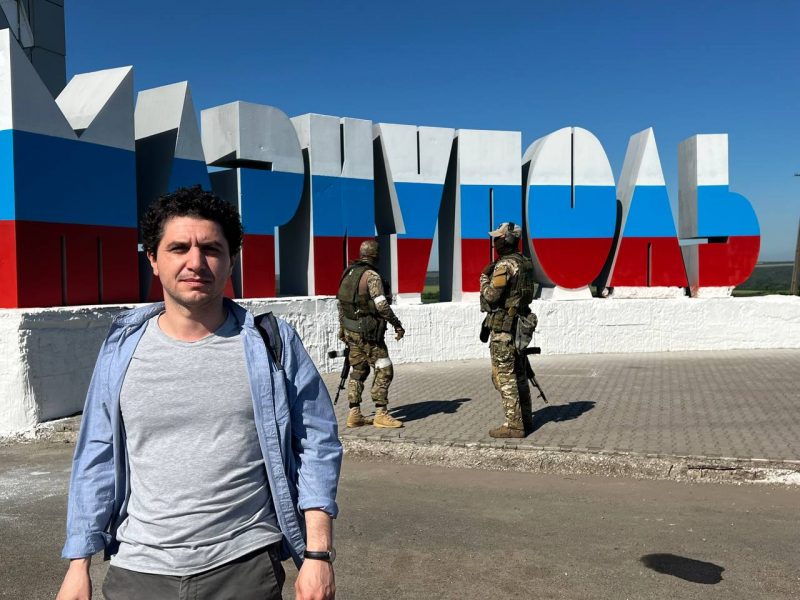
The city port, where not a single standing building remains, is completely under the control of the Russian forces.
In front of us are the Sea of Azov and the naval vessels of the Russian Navy.
“Turkey is an important grain route”
Denis Pushilin, President of the Donetsk People’s Republic, heads towards the middle of the city port to inform the press about the situation in the region. With the arrival of Pushilin, the number of military personnel and drones flying over us starts to increase.
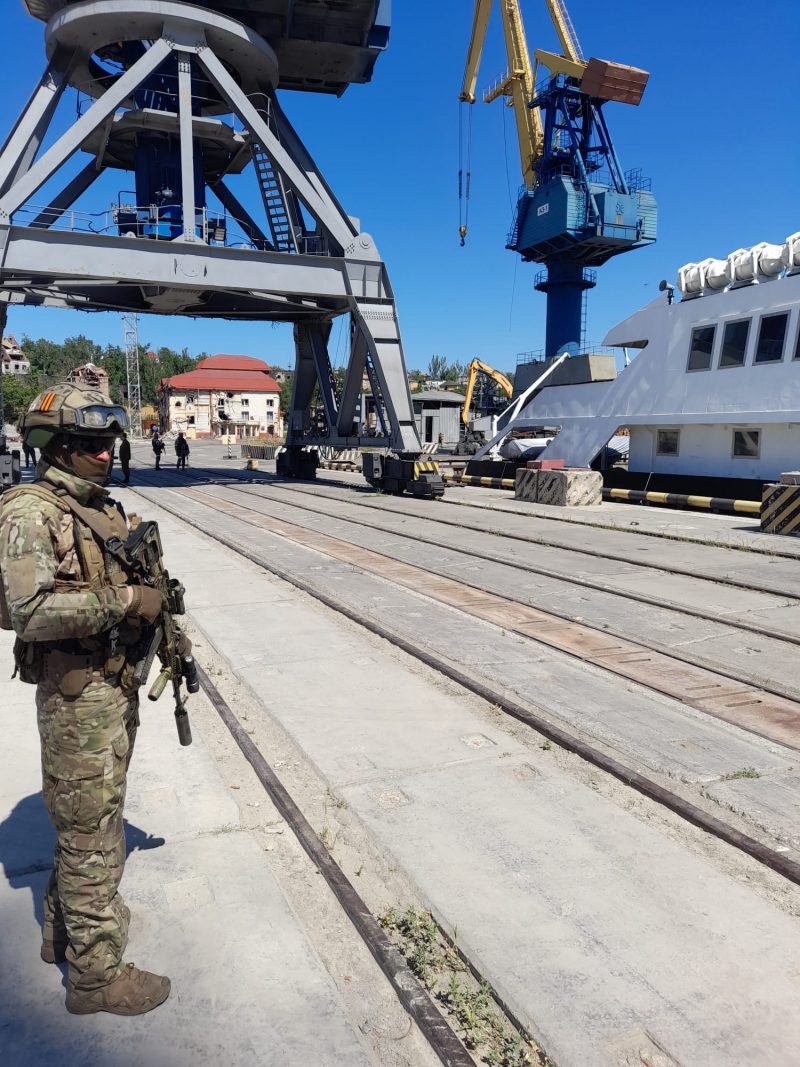
In his speech, he spoke about ongoing conflicts (the continuing attacks of the Ukrainian forces, and the air defense systems being activated), resolutions over the infrastructure problems (ongoing problems in water, electricity and gas services), and the resettlement of displaced people.
We ask Pushilin about the Turkish and Russian Navies’ joint project to create a grain corridor through the Black Sea. He answers; “Turkey is an important grain and trade route… No one asks the following question: How is it that Turkey has been exporting large reserves of coal in the last 8 years? (…) There is an agreement between Turkey and Russia on some issues of the grain corridor”. He adds that they have “welcomed the development very positively”.
According to Pushilin, “Ukraine is exaggerating this grain crisis in order to maintain control of the seaports and to ensure their security.”
Another person we had the opportunity to meet at another part of our visit is Alexander Saulenko mayor of Berdyansk, a grain-producing city with a significant seaport. Saulenko said: “Turkish companies sent their offers to buy wheat, but no export has been taken place yet”, and adding “Turkey is a friendly country.”
“It is not the stench of corpses, but the stench of blood”
And we are finally at the most interesting place of our trip in the name of conflict journalism… Azovstal.
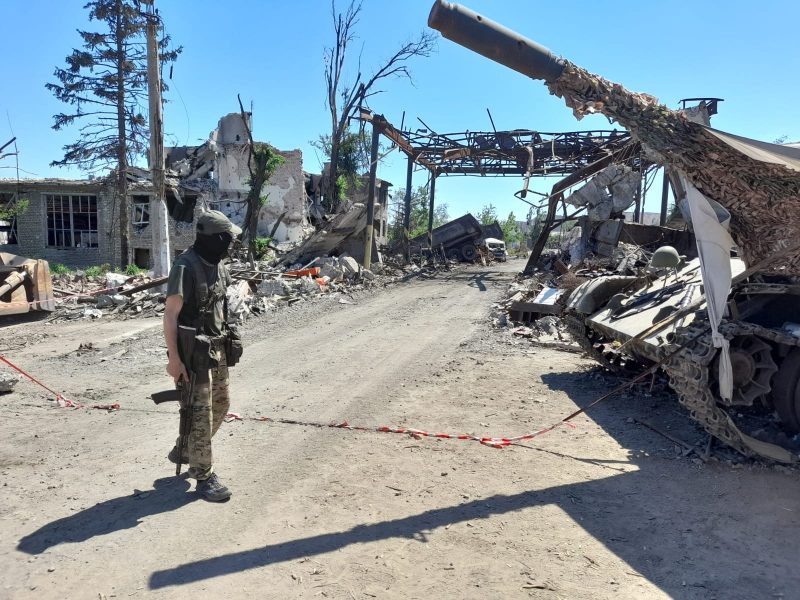
Once the largest steelworks plant in Europe, it has now become one of the symbols of the ongoing conflict between Russia and Ukraine.
The sketchy Nazi Azov Battalions kept hiding from the Russian army for about 3 months in the underground bunkers of this factory. But they had to surrender in the end.
We pass the checkpoint at the main entrance gate of the factory. Under the shade cover next to a tank, soldiers are having a smoke and chat with each other.
The view gets more dramatic as we move further, burnt heavy-duty vehicles, trucks and military vehicles… Cartridges, unfired bullets and even pieces of weapons cover the ground… A huge pile of iron and rocks turned into dust.
The sight literally describes the meaning of destruction… A foul stench. One of the journalists who has worked in Syria for many years, remembers the stench from the conflict zones in the city of Aleppo. “It is not the stench of corpses, it is the stench of blood,” he says.
The soldiers are telling us to exactly follow in their footsteps and not to touch anything.
We move away from the blazing sun into the dark and a damp area.
It is pitch black. Flashlights on soldiers’ rifles and on the cameras barely illuminate our path.
We pass through narrow corridors. The stench is getting more pungent. Dozens of bunk beds are tucked into a narrow room, clothes, cartridges and all kinds of media such as magazines, books, photographs cover the floor.
Nazi and Pagan signs are engraved on the walls.
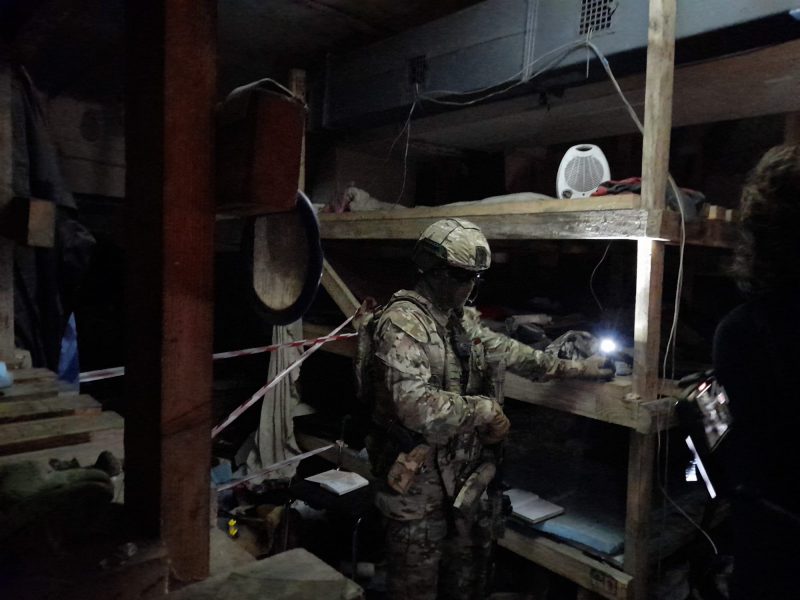
There are wires strapped on the sides of the doors. Soldiers say there were neutralized booby traps all over.
We continue to move underground. The darkness covers every corner. We are following the soldier ahead of us with a rapid pace. We pass through a corridor with spiked walls that resemble the inner side of an iron maiden.
Of course, human beings can adapt to any situation. I heard that the first words of one of the foreign fighters that were captured here was, “Please turn off the lights.”
It is told that there are still bodies lying around a few floors beneath. They are very difficult to retrieve from where they are because of the mines and booby trap laid all over.
We follow the same path going back where we came from. Some of the journalists preferred to stay inside to take coverage. We climb the steep stairs, and we are back in the daylight…
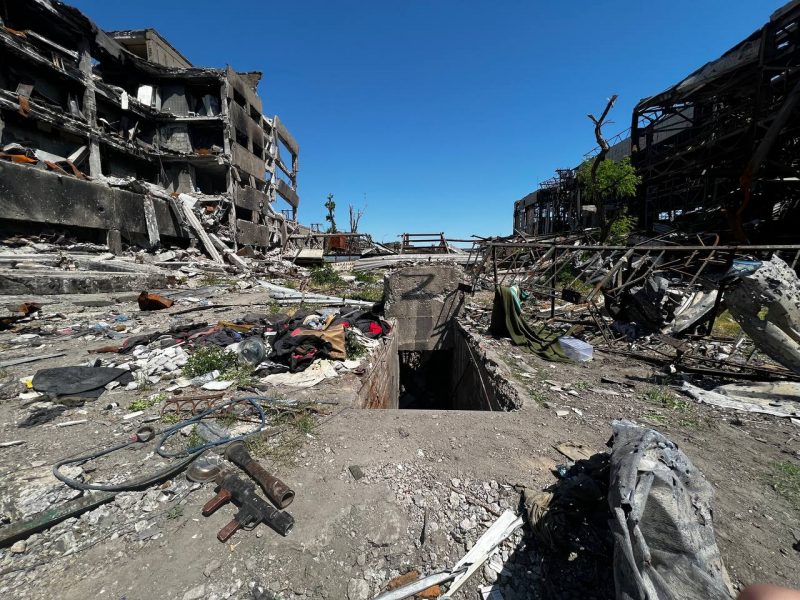
“The devil’s lair”
I sit next to the soldiers at the checkpoint at the main gate of the factory.
Almost all of them are from the Donbass region. I ask if they have taken part in the conflicts. They simply answer with “yes”, then a deep silence settles.
I ask them about foreign fighters.
The older soldier with a longer beard takes the word; “There was lots of Poles. Most of the dead bodies belonged to them. We have also seen some Americans and French.”
So, what happens now? Will this place be rebuilt as a steelworks plant? One of them says it will be turned into a park… The other one laughs and says, “This place will be Russialand, just like the Disneyland”. Then adds, “The devil’s lair will completely be destroyed.”





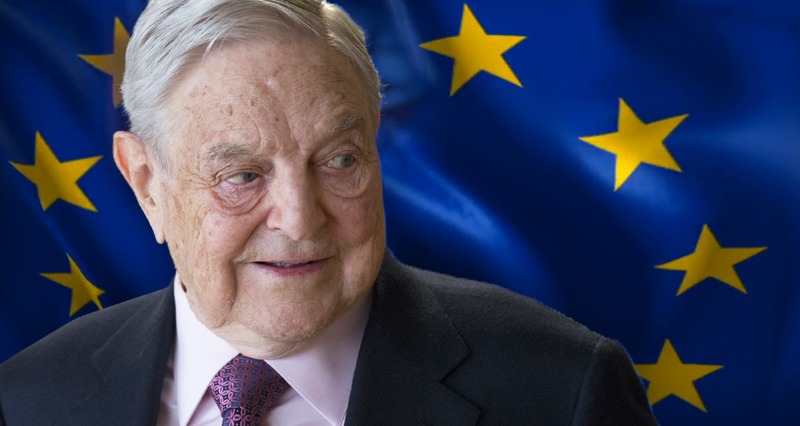

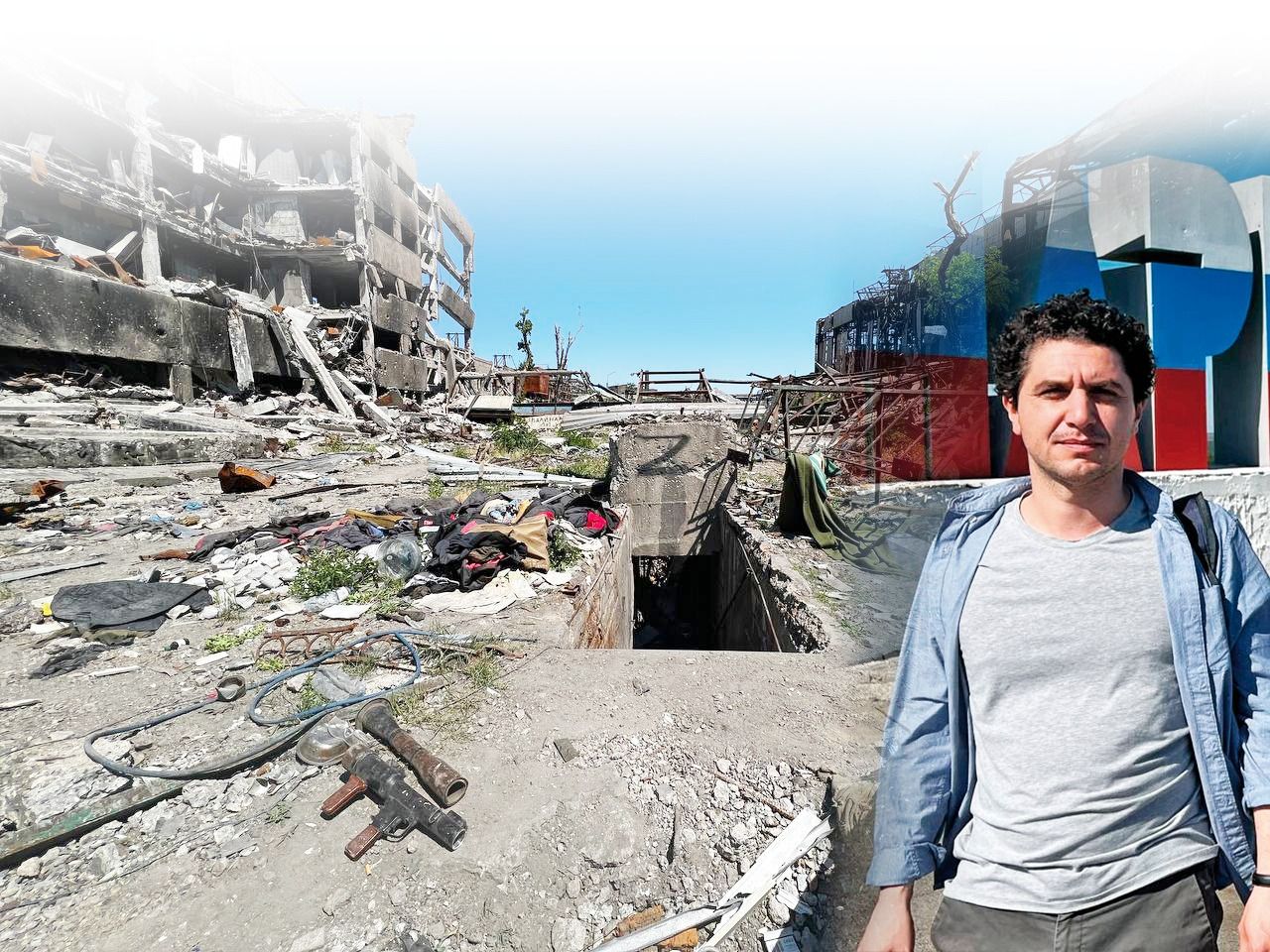
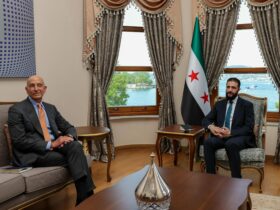
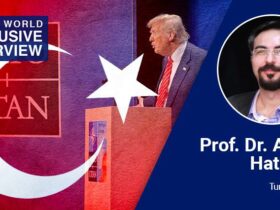
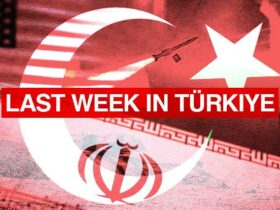
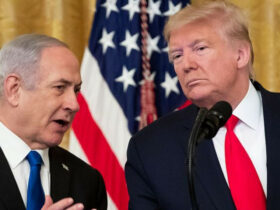
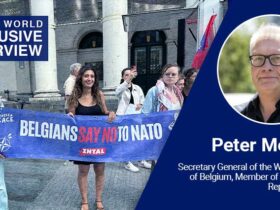
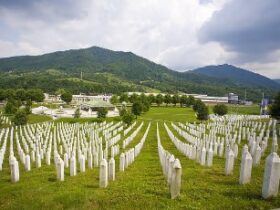
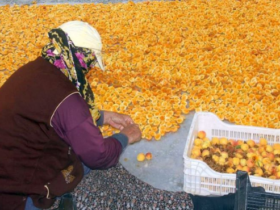
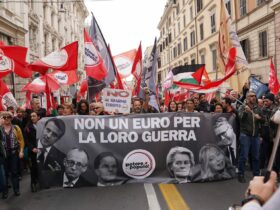

Leave a Reply